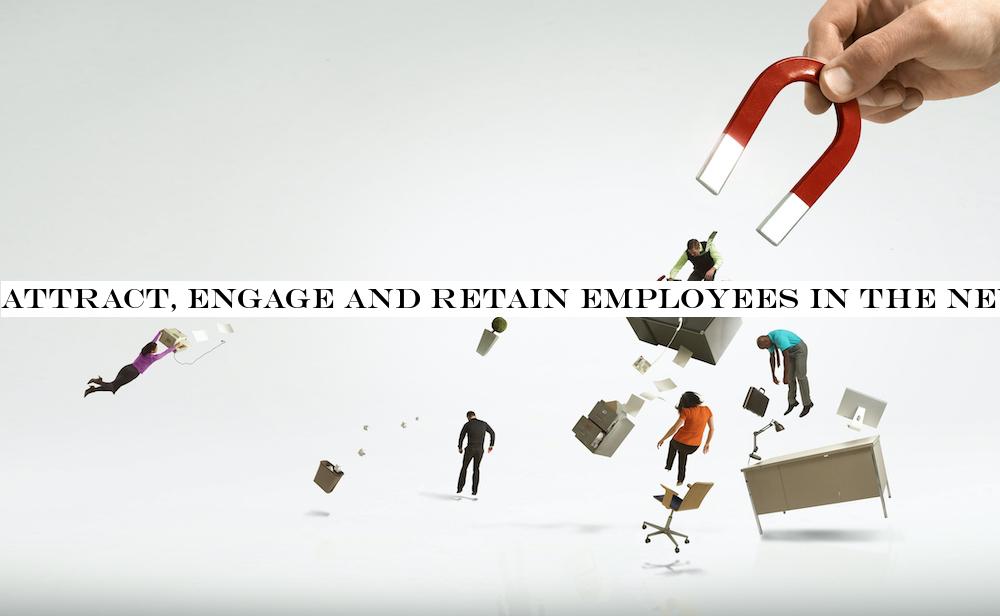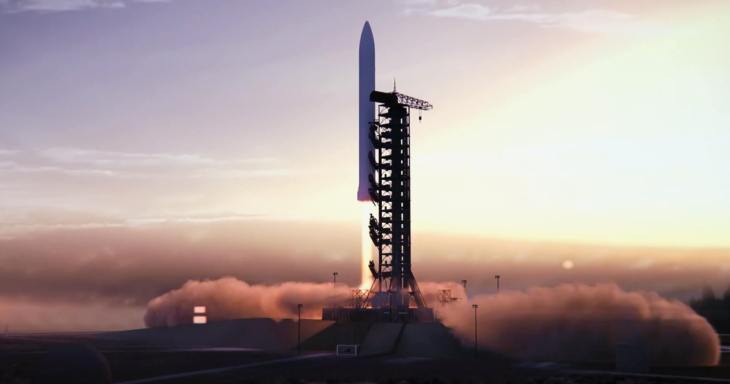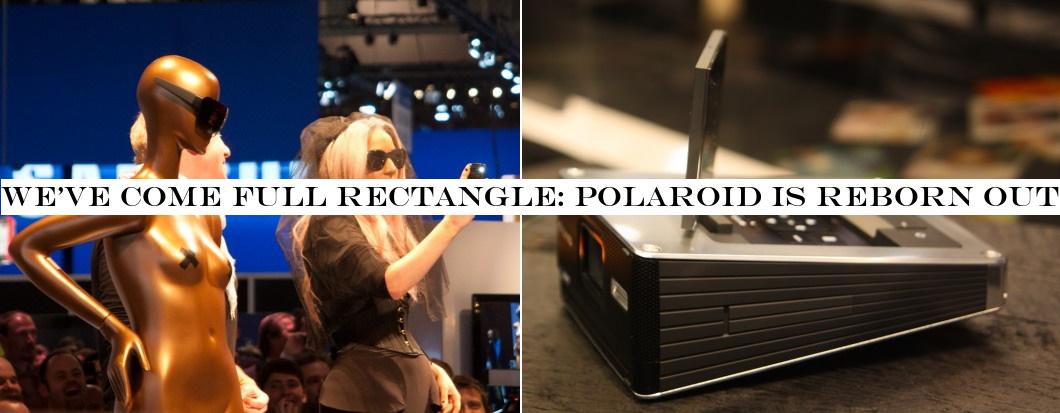Music
Trailers
DailyVideos
India
Pakistan
Afghanistan
Bangladesh
Srilanka
Nepal
Thailand
StockMarket
Business
Technology
Startup
Trending Videos
Coupons
Football
Search
Download App in Playstore
Download App
Best Collections
Technology

Yesterday, I had the pleasure of hopping on Zoom with betaworks& John Borthwick and Matt Hartman to discuss the tech worldadaptation to this new locked-down world, the future of new media and answer questions from the audience.
We discussed whether new media companies can raise capital right now, and touched on emerging trends around audio, voice, AR, live events, travel-related companies and many other topics.
It was a delight, and I&m excited to do more of these in the future.
For those of you who missed the Zoom, herea rundown of what we discussed (audio embed below).
- Details
- Category: Technology Today
Read more: John Borthwick Matt Hartman of betaworks review coronavirus adaptation approaches
Write comment (99 Comments)
When looking for answers, where do people first turn? For many, itGoogle.
During the first half of March, we saw Google searches for &work from home& reach a 12-month high, garnering at least 50% more search interest than the anticipated peak, which usually occurs within the first week of January. This number will continue to grow as outside circumstances evolve.
This search behavior reflects the world around us. Today, employees and employers alike are grappling with the new norm — at least for the short-term — which is working remotely. While having a remote-ready model in place was once viewed as a competitive advantage to attract talent, itnow a must-have to keep organizations afloat.
With vacant positions costing organizations around $680 daily, the impact that interrupted recruiting efforts can have on a business& bottom line is jarring. As such, HR professionals were early adopters of successful remote communication practices, learning lessons that can be applied across the business to successfully make personal connections without being in-person. Employers are doing all they can to address their existing employee base at this critical time, while also working hard to maintain their hiring efforts.
Having the right technology in place to sustain work-from-home practices is more important now than ever before. There are four steps that employers can take to successfully integrate and adapt successful virtual hiring technologies into their business continuity plans, considering all outside circumstances, and without sacrificing their productivity and unique company culture.
Prepare and plan. Employers have an obligation to provide their people with clear direction in times of disruption.
- Details
- Category: Technology Today
Read more: Draw in, involve and keep employees in the brand-new remote-work period
Write comment (96 Comments)
One of the newer companies attempting to join the rarified group of private space launch startups actually flying payloads to orbit has redirected its entire UK-based manufacturing capacity towards COVID-19 response. Skyrora, which is based in Edinburgh, Scotland, is answering the call of the UK government and the NHS to manufacturers to do what they can to provide much-needed healthcare equipment for frontline responders amid the coronavirus crisis.
Skyrorary says that the entirety of its UK operations, including all human resources and its working capital are now dedicated to COVID-19 response. The startup, which was founded in 2017, had been working towards test flights of its first spacecraft, making progress including an early successful engine test using its experimental, more eco-friendly rocket fuel that was completed in February.
For now, though, Skyrora will be focusing full on building hand sanitizer, its first effort to support the COVID-19 response. The company has already produce their initial batch using WHO guidelines and requirements, and now aims to scale up its production efforts to the point where it can manufacture the sanitizer at a rate of over 10,000 250 ml bottles per week.
Thereactually a pretty close link between rocketry and hand sanitizer: Ethanol, the form of alcohol that provides the fundamental disinfecting ingredient for hand sanitizer, has been used in early rocket fuel. Skyrora‘Ecosene& fuel is a type of kerosene, however, which is a much more common modern aviation and rocket fuel.
In addition to sanitizer, Skyrora is now in talks with the Scottish Government to see where 3D-printed protective face masks might have a beneficial impact on ensuring health worker safety. Ittesting initial prototypes now, and will look to mass produce the protective equipment after those tests verify its output.
Plenty of companies are pitching in where they can, including by shifting their production lines and manufacturing capacity towards areas of greatest need. Itdefinitely an ‘all-hands-on-deck& moment, but theredefinitely a question of what happens to businesses that shift their focus this dramatically once the emergency passes, especially for young startups in emerging industries.
- Details
- Category: Technology Today
President Donald Trump signed Friday a presidential directive ordering GM to produce ventilators and to prioritize federal contracts, just hours after the automaker announced plans to manufacture the critical medical equipment needed for patients suffering from COVID-19, the disease caused by the coronavirus.
The order, made under the Defense Production Act, marks a sudden reversal by Trump, who has touted the efforts by GM and other manufacturers to try to ramp up production of ventilators and personal protective gear that is in short supply as COVID-19 cases continue to rise. The order came amid a dispute with GM over a contract to produce the ventilators.
GM and its partner Ventec Life Systems had already announced plans to start producing the ventilators &at cost,& despite the lack of a federal contract. The order would force GM to prioritize federal contracts, which would prevent the automaker from selling to states, or at least make it more difficult.
&Our negotiations with GM regarding its ability to supply ventilators have been productive, but our fight against the virus is too urgent to allow the give-and-take of the contracting process to continue to run its normal course. GM was wasting time. Todayaction will help ensure the quick production of ventilators that will save American lives,& Trump said in a statement.
GM responded Friday afternoon to Trumporder noting that it has been &working around the clock& with Ventec and itssupply base &to meet this urgent need.&
&Our commitment to build Ventechigh-quality critical care ventilator, VOCSN, has never wavered,& the GM statement continues. &The partnership between Ventec and GM combines global expertise in manufacturing quality and a joint commitment to safety to give medical professionals and patients access to life-saving technology as rapidly as possible. The entire GM team is proud to support this initiative.&
Earlier Friday, GM said it would start producing Ventec Life Systems ventilators even as a purchase order with the federal government remained in limbo. The companies said Friday that the ventilators will be produced at GMengine plant in Kokomo, Ind., using about 1,000 workers.
The GM and Ventec announcement followed sharp criticism by Trump via several tweets that blasted GM and its CEO and chairman Mary Barra via Twitter, accusing the company of falling short of its promised capacity and asking for &top dollar,& a term that seems to imply the automaker was trying to profit off of the contract.
GM, which is a contract supplier for Ventec, has said it is &donating its resources at cost,& a term that means it will not profit off of any sales of the masks and ventilators it produces. Whether the federal government would sign a purchase order with the companies has been a lingering question that looked less certain as talks unfolded, according to sources.
Efforts to set up tooling and manufacturing capacity at the factory are already underway to produce Venteccritical care ventilator, VOCSN, according to GM. The automaker said production will begin in the next seven to 14 days with the first shipments of the FDA-cleared ventilators scheduled to begin in April. Ventec is also trying to ramp up production at its manufacturing facility in Bothell, Wash.
Separately, GM also said it will start next week producing Level 1 surgical masks at its Warren, Mich. manufacturing facility. The automaker expect to ramp up mask production capacity to 50,000 masks per day within the next two weeks with the potential to increase to 100,000 per day.
Trumptweets came after The New York Times reported that U.S. government officials canceled a planned announcement outlining the GM and Ventec deal to produce as many as 80,000 ventilators for the Federal Emergency Management Agency. The announcement, which was supposed to happen Wednesday, was canceled after FEMA balked at the more than $1 billion price tag.
TechCrunch has independently confirmed that the federal government canceled the announcement because of reservations over the cost. FEMA and White House trade adviser Peter Navarro had balked at the cost, according to a source at GM.
Trumptweets attacking Barra and GM — as well as calling for the automaker to start production at an Ohio factory that the automaker no longer owns — lies in stark contrast from public comments the president made earlier in the week when he touted efforts by companies to mobilize their resources to help alleviate a shortage of medical supplies such as face masks and ventilators.
Trump has repeatedly said he does not need to use the Defense Production Act to compel companies to help in the effort to manufacture needed supplies. But that changed Friday when he said he would use it because of the GM ventilator purchase order.
The cost of ventilators
As COVID-19 spread and health and government officials grew increasingly concerned about a shortage of ventilators and personal protective equipment, a number of manufacturers announced plans to ramp up production capacity or donate any existing supplies. GM was among that group.
On March 20,GM and Ventec announced plans to work to increase production of respiratory care products, a partnership that grew out of StopTheSpread.org, a coordinated effort of private companies to respond to COVID-19.
Before that announcement was made, GM investigated the feasibility of sourcing the more than 700 components needed to build up to 200,000 of Venteccritical care ventilators called VOCSN. Ventec describes these VOCSN devices as multi-function ventilators that were cleared in 2017 by the FDA.
GM identified the Indiana plant as the likely location and determined it would need to build a new clean room within the factory that was large enough to produce the ventilators, according to the source. GM estimated it would cost about $750 million, a price that included retrofitting a portion of the engine plant, purchasing materials to make the ventilators and paying the 1,000 workers needed to scale up production, the source said. The remaining $250,000 of estimated costs came from Ventec.
GM estimated that it could ramp up production in time to deliver ventilators by mid-April, a time when states are expected to be dealing with a surge of COVID-19 cases. The companies said they are poised to deliver the first ventilators next month and ramp up to a capacity of more than 10,000 critical care ventilators per month with the infrastructure and capability to scale further.

- Details
- Category: Technology Today
With shortages of N95 face masks persisting nationwide, healthcare facilities are scrambling to find ways to clean and treat the masks for reuse to protect doctors and nurses most at risk of exposure to COVID-19.
Duke University thinks it has found a solution using vaporized hydrogen peroxide to decontaminate the masks.
The process uses specialized equipment to vaporize hydrogen peroxide, which can then infuse all the layers of the mask to kill germs (including viruses) without degrading mask material.
&This is a decontamination technology and method we&ve used for years in our biocontainment laboratory,& said Scott Alderman, associate director of the Duke Regional Biocontainment Laboratory, in a statement.
The university said it has proven effective and will begin using the technology at all three of its hospitals, according to Matthew Stiegel, the director of the Occupational and Environmental Safety Office at Duke.
Ideally, the hospitals would be able to use fresh masks and not need to try to decontaminate their masks, but these are not ideal times.
Dukedecision to use hydrogen peroxide to decontaminate N95 masks is based on published studies conducted in 2016, but the practice wasn&t widespread, because the industry wasn&t facing shortages. Those earlier studies also didn&t include fit-testing — or the resizing of masks for individual wearers — after cleaning. Duke has now done that efficacy testing in the real world, the university said.
&The ability to reuse the crucial N95 masks will boost the hospitals& ability to protect front-line healthcare workers during this time of critical shortages of N95 masks,& said Cameron Wolfe, MD, associate professor of medicine and infectious disease specialist.
Monte Brown, MD, vice president at Duke University Health System, said the Duke team is working to spread the word about the technique, making the protocols widely available. He said several health systems and many pharmaceutical companies already have the needed equipment, which is currently used in different ways, and could ramp up operations to come to the aid of their local hospitals.
&We could stand up in front of our staff and state with confidence that we are using a proven decontamination method,& Brown said. &It has been a proven method for years. While this alone will not solve the problem, if we and others can reuse masks even once or twice, that would be a huge benefit given the current shortages.&

- Details
- Category: Technology Today
More than a decade after announcing that it would keep Polaroidabandoned instant film alive, The Impossible Project has done the… improbable: It has officially become the brand it set out to save. And to commemorate the occasion, therea new camera, the Polaroid Now.
The convergence of the two brands has been in the works for years, and in fact Impossible Project products were already Polaroid-branded. But this marks a final and satisfying shift in one of the stranger relationships in startups or photography.
I first wrote about The Impossible Project in early 2009 (and apparently thought it was a good idea to Photoshop a Bionic Commando screenshot as the lead image), when the company announced its acquisition of some Polaroid instant film manufacturing assets.
Polaroid at the time was little more than a shell. Having declined since the &80s and more or less shuttered in 2001, the company was relaunched as a digital brand and film sales were phased out. This was unsuccessful, and in 2008 Polaroid was filing for bankruptcy again.
This time, however, it was getting rid of its film production factories, and a handful of Dutch entrepreneurs and Polaroid experts took over the lease as The Impossible Project. But although the machinery was there, the patents and other IP for the famed Polaroid instant film were not. So they basically had to reinvent the process from scratch — and the early results were pretty rough.
But they persevered, aided by a passionate community of Polaroid owners, continuously augmented by the film-curious who want something more than a Fujifilm Instax but less than a 35mm SLR. In time the process matured and Impossible developed new films and distribution partners, growing more successful even as Polaroid continued applying its brand to random, never particularly good photography-adjacent products. They even hired Lady Gaga as &Creative Director,& but the devices she hyped at CES never really materialized.

Gaga was extremely late to the announcement, but seeing the GL30 prototype was worth it
In 2017, the student became the master as ImpossibleCEO purchased the Polaroid brand name and IP. They relaunched Impossible as &Polaroid Originals& and released the OneStep 2 camera using a new &i-Type& film process that more closely resembled old Polaroids (while avoiding the expensive cartridge battery).
Polaroid continued releasing new products in the meantime — presumably projects that were under contract or in development under the brand before its acquisition. While the quality has increased from the early days of rebranded point-and-shoots, none of the products has ever really caught on, and digital instant printing (Polaroidlast redoubt) has been eclipsed by a wave of nostalgia for real film, Instax Mini in particular.
But at last the merger dance is complete and Polaroid, Polaroid Originals and The Impossible Project are finally one and the same. All devices and film will be released under the Polaroid name, though there may be new sub-brands like i-Type and the new Polaroid Now camera.

Speaking of which, the Now is not a complete reinvention of the camera by far — ita &friendlier& redesign that takes after the popular OneStep but adds improved autofocus, a flash-adjusting light sensor, better battery and a few other nips and tucks. At $100 itnot too hard on the wallet, but remember that film is going to run you about $2 per shot. Thathow they get you.
Itbeen a long, strange trip to watch, but ultimately a satisfying one: Impossible made a bet on the fundamental value of instant film photography, while a series of owners bet on the Polaroid brand name to sell anything they put it on. The riskier long-term play won out in the end (though many got rich running Polaroid into the ground over and over), and now with a little luck the brand that started it all will continue its success.
- Details
- Category: Technology Today
Read more: We've come full rectangular shape: Photograph is reborn out of The Difficult Project
Write comment (94 Comments)Page 1105 of 1418

 14
14





